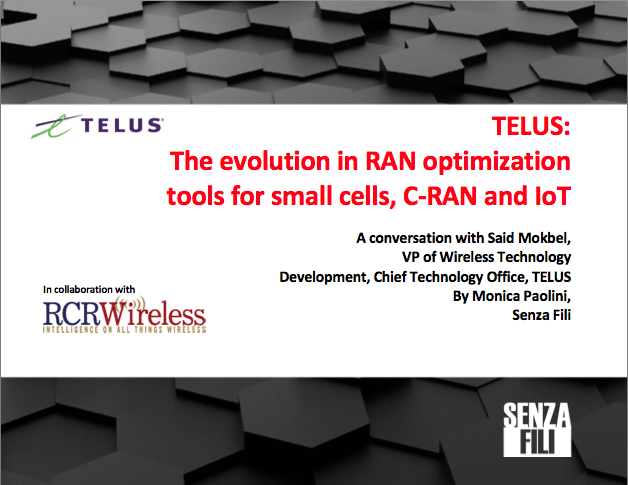A conversation with Said Mokbel, VP of wireless technology development, chief technology office, TELUS
Download a transcript of the interview and be the first to receive the smart RAN report
The way mobile operators optimize the radio access network and maximize RAN resource utilization is changing as mobile networks become more complex and subscribers – as well as “Internet of Things” devices – use them more intensively. In this conversation with Said Mokbel, VP of wireless technology development, chief technology office, TELUS in Canada, we talked about how IoT traffic characteristics change the way mobile operators can optimize the use of the network infrastructure they have.
“We have focused traditionally on broadban, and trying to squeeze more bandwidth in and have wider channels, but I don’t think we have paid attention as much to the number of connections we need to serve, many of which could be stationary, or semi-stationary,” Mokbel said. “And many of which do not need to transmit in a uniform fashion, or in a two-way duplex fashion.”
As the complexity of the network increases, automation is no longer a nice-to-have feature, but a necessity, as Mokbel pointed out: “We’ve been experimenting with them for years and deploying them. The optimization of small cells uses good RF engineering, but it also requires a lot of automation.”
Read the full interview to find out more about Mokbel’s perspective on how RAN optimization is changing as small cells, C-RAN and IoT become part of mobile networks.
This conversation is included in the Senza Fili report “The smart RAN: trends in the optimization of spectrum and network resource utilization.” If you would like to receive a complimentary copy of the report, please click here. We have also discussed this topic at length in our recent RAN Optimization webinar

